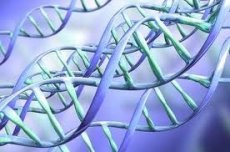New publications
Scientists have discovered the gene responsible for chronic pain
Last reviewed: 30.06.2025

All iLive content is medically reviewed or fact checked to ensure as much factual accuracy as possible.
We have strict sourcing guidelines and only link to reputable media sites, academic research institutions and, whenever possible, medically peer reviewed studies. Note that the numbers in parentheses ([1], [2], etc.) are clickable links to these studies.
If you feel that any of our content is inaccurate, out-of-date, or otherwise questionable, please select it and press Ctrl + Enter.

British researchers have discovered a gene responsible for chronic pain, the BBC reports. Their work opens the way to the development of new painkillers.
The HCN2 gene, which functions in pain nerve endings, codes for the hyperpolarization-activated, cyclic nucleotide-gated sodium-potassium ion channel type 2, which is involved in the transmission of nerve impulses. This gene has been known for several years, but its significance has not been fully elucidated.
Researchers from the University of Cambridge used genetic engineering to knock out the HCN2 gene in laboratory mice and studied their response to different types of pain stimuli.
It turned out that the absence of this gene significantly suppresses the perception of neuropathic pain (chronic pain sensations that occur when nerves are damaged) and does not affect the “useful” acute pain that signals injury or disease.
According to statistics, about one in seven Britons suffers from chronic pain in the head, back or joints, and traditional methods of treatment do not relieve this pain sufficiently. The study leader Peter McNaughton believes that the development of drugs that block the HCN2 ion channels will help such patients.

 [
[